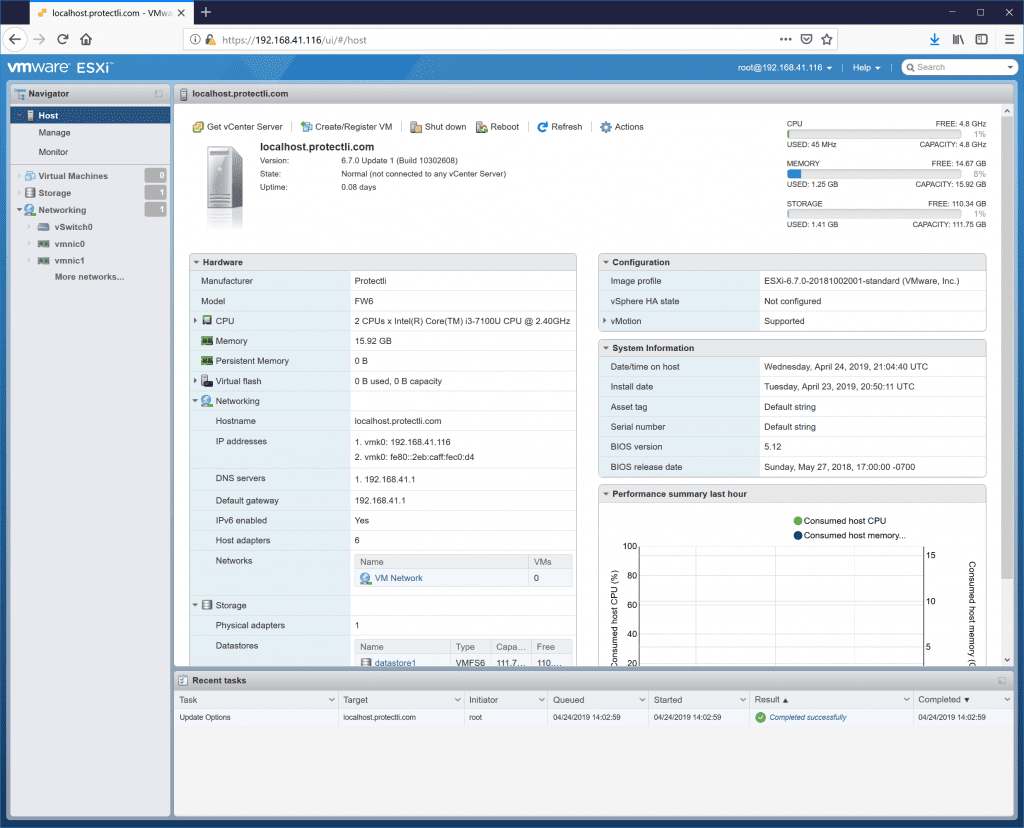

I selected LVM, but did not choose to encrypt, as this is a lab, and the NAS where the VM disk will be stored is encrypted.Ĭlick Continue, to write partition changes to disk.Ĭonfigure the host’s name, enter name, username, and password.
#Vmware esxi 6.7 mac add storage install#
Select Normal, download updates, and install third party software You should be able to see Ubuntu booting from the ISO. Power On the VM, and click on the little remote screen to open a remote session tab.
#Vmware esxi 6.7 mac add storage iso#
I changed the CD-Rom to DataStore ISO, and selected the location where I have the Ubuntu Install ISO file.

I select an NFS datastore, but can seamlessly Storage vMotion it elsewhere, once I have the VCSA installed and configured.Ĭustomize any of the Guest resources as desired. Select the datastore location to store the VM. Select VM ’s and Templates, and Create and New Virtual Machine.Ĭonfigure the VM ’s Name, select the compatibility, guest OS family, and version. At this point, vCenter is not installed, so I’m logged directly into the HTML5 Client on the Host. The Ubuntu install is pretty straight forward, so this was a pretty quick lab. I’ll also be updating the OS, and installing the Open-VM-Tools. Needing a desktop to work from while building the new infrastructure, one of the first virtual machine’s I’m building is a Ubuntu 18.04 with a desktop environment.


 0 kommentar(er)
0 kommentar(er)
